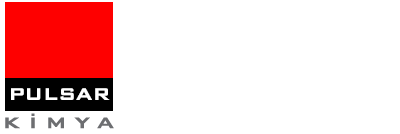What is UV Adhesive?
UV adhesive is a special type of adhesive that cures (hardens) under ultraviolet (UV) light. Unlike conventional adhesives, the main feature of UV adhesives is that they remain in liquid form until they are exposed to UV light, allowing you to position and adjust parts as desired. When UV light is applied, they cure very quickly and reliably.
Below you can see an example of a UV adhesive application:
High Performance in UV Adhesives with Pulsar Kimya
With a wide range of products for various industries and applications, Pulsar Kimya also stands out in the field of UV adhesives. Thanks to its innovative R&D experience and high-quality production standards, it develops UV adhesive solutions that offer high performance and reliable results for bonding different materials. In addition, with the support of its expert technical team, it guides users through the application processes, helping them choose the most suitable UV adhesive formulation for their needs.
How Do UV Adhesives Work?
UV adhesives contain photoinitiators that start a polymerization reaction when exposed to UV light. As a result of this reaction, the adhesive transitions from liquid to solid state, forming a strong bond that permanently joins the parts to be bonded.
- Application: The adhesive is applied to the surface, and the parts are brought together in the correct position.
- Waiting Period Without Movement: The adhesive remains fluid until UV light is applied, allowing for adjustments and positioning.
- Curing: A UV light source (e.g., a UV lamp) is directed at the adhesive for a certain period. This period is usually as short as just a few seconds (depending on the product and the intensity of the UV light).
- Hardening: As a result of the chemical reaction triggered by the photoinitiators, the adhesive solidifies and reaches its full strength very quickly.

Advantages of UV Adhesives
- Fast Curing: They can harden in minutes or even seconds under UV light (depending on the product and the intensity of the UV light).
- Single-Component Formulation: They are usually single-component adhesives, requiring no mixing or addition of a separate hardener.
- Adjustable Waiting Time: Because they do not cure until exposed to UV light, it becomes easier to position and make adjustments to the parts.
- Transparent and Aesthetic Appearance: Many UV adhesives create an almost invisible bond on materials such as glass or transparent plastics.
- Eco-Friendly: Some UV adhesives contain no solvents or have low VOC (Volatile Organic Compounds) levels, making them less harmful in terms of emissions.
Areas of Use
- Glass and Plastic Assembly: Preferred for glass display cases, transparent plastic products, eyeglass frames, or acrylic parts.
- Electronic and Optical Devices: Used for securing small parts on circuit boards and for delicate tasks such as sensor and lens assembly.
- Medical and Healthcare Applications: Used in medical devices and equipment that need quick assembly in sterile environments, such as bonding medical tubes, syringes, or laboratory equipment.
- Jewelry and Decorative Products: Often preferred for bonding stones and glass in jewelry to achieve an aesthetic appearance.
- Packaging and Labeling: In certain specialized packaging applications, its quick curing and clean finish provide efficiency.

Points to Consider When Choosing a UV Adhesive
- Light Transmittance: The material must allow UV light to penetrate the adhesive. On fully opaque surfaces, UV adhesives do not perform as expected.
- Required Strength: The product choice depends on factors such as temperature, impact, humidity, or chemical conditions it needs to withstand.
- Curing Time: Different UV adhesives cure under different wavelengths and durations. It is important to select an adhesive that fits your process speed.
- Viscosity: Depending on the surface and the intended application method, you can choose UV adhesives with low, medium, or high viscosity.
- Health and Safety: Use protective equipment to avoid exposure to UV light.
Disadvantages of UV Adhesives
- Opaque Materials: If the UV light cannot penetrate deeper layers, complete curing will be prevented.
- Equipment Requirement: They cannot be used without a proper UV light source or UV lamp.
- Temperature and Light Resistance: Some UV adhesives may lose their properties if exposed to very high temperatures or continuous UV radiation.
Application Tips
- Cleaning: Dirt, dust, and oil residues on the surfaces reduce bonding performance. Pay attention to cleaning the surfaces before application.
- Test Procedure: Before starting a large-scale production process, conducting a small test application is important for choosing the correct duration and wavelength.
- Protective Equipment: Avoid directly looking at UV lamps and protect skin by using goggles and gloves.
- Proper Positioning: Since the adhesive remains fluid until UV light is applied, it is easier to align parts correctly.
About Adhetron UV Adhesive Products
When you need products and application support for UV adhesives, Pulsar Kimya develops high-performance products that comply with industrial standards. UV adhesive options with different viscosities and curing times are available for a wide range of applications, including electronics, optics, medical, packaging, and decorative industries. With its innovative R&D approach and expert technical staff, Pulsar Kimya is always by your side to determine the most suitable adhesive solution for your production processes and to ensure a smooth application phase.
If you are looking for UV adhesive solutions for your production line or project needs, you can review Pulsar Kimya’s extensive product range and get direct technical support from experts. Remember, choosing the right adhesive and getting professional guidance will increase your efficiency while significantly reducing costs.
Some of Our Products:
For Our General UV Adhesives: UV Adhesive
Adhetron Uv Adhesives:Adhetron UV Adhesives

[…] yapıştırıcılar hakkında detaylı bilgi için Pulsar Kimya sitesini ziyaret […]